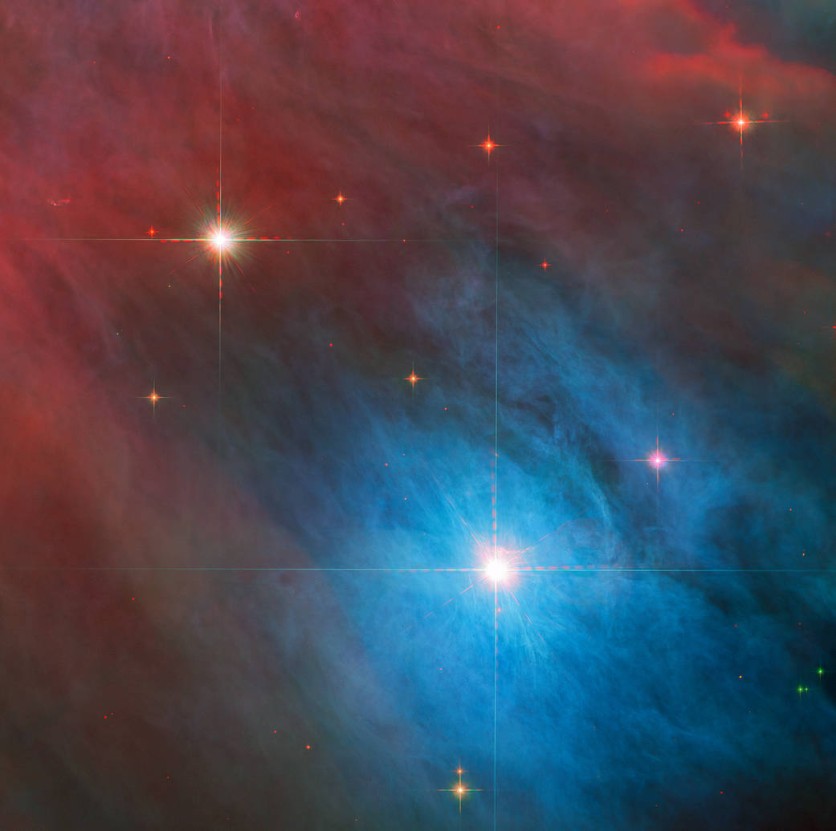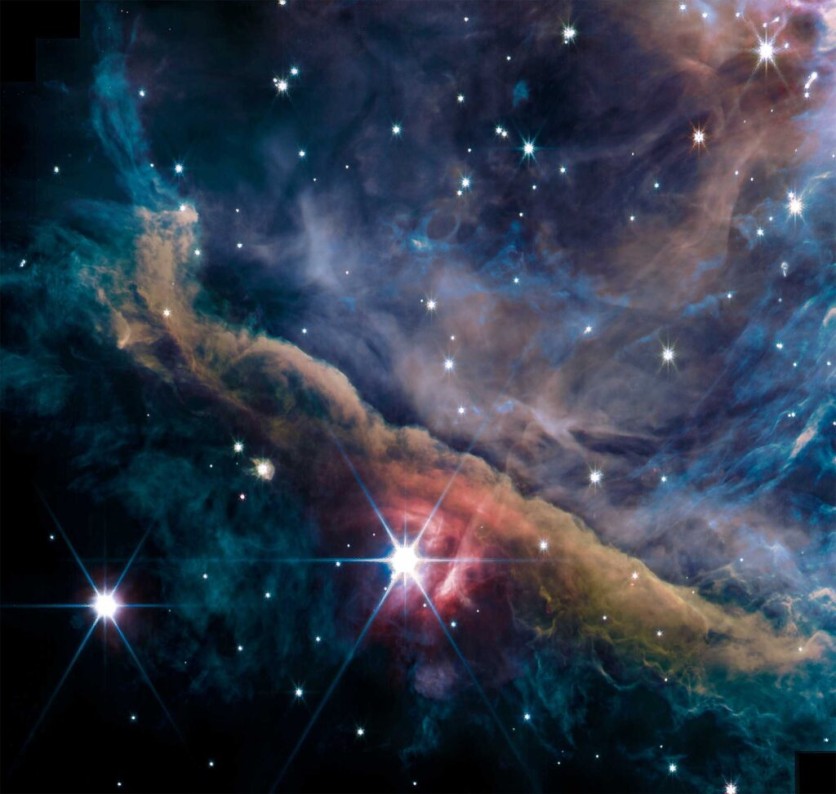The Orion Nebula is always brimming with wondrous spectacles since it is home to millions of stars. However, NASA's Hubble Space Telescope only captured a pair of among those stars, and they shine sharply in this newly-released image.
An image from the telescope shows a tiny companion star in the top left corner. Both stars are located in the Orion Nebula, a massive star-forming region that hails 1,450 light-years away from our planet.

Hubble Spikes
Orion Variables are a specific class of variable stars, including V 372 Orionis. Astronomers may see these young stars' tumultuous mood swings and growing pains as erratic changes in luminosity, according to NASA.
The patchy gas and dust of the Orion Nebula dominate this image, which is common with Orion Variables and V 372 Orionis in particular.
Data from two Hubble instruments are superimposed on this image. Striking details of this region of the Orion Nebula were revealed by layering infrared and visible wavelength data from the Wide Field Camera 3 and Advanced Camera for Surveys of Hubble.
Diffraction spikes that encircle the brilliant stars in this celestial image are another tiny mark that Hubble left on it.
The four vanes inside Hubble that support the telescope's secondary mirror interact with a strong point source of light to create the four spikes that surround the brightest stars in this image.
Meanwhile, the diffraction spikes of the James Webb Space Telescope are six-pointed because of its hexagonal mirror segments and its three-legged secondary mirror support structure.
Read also : NASA's Hubble Space Telescope Captures 'Orion Nebula's Dreamy Cloudscape' With Over 500 Exposures!
Webb Captures Orion
The Orion Nebula is also known as the "picture book of star creation." Its wonders have been recently captured by Webb in their clearest and most detailed views yet.
This composite image combines the output of multiple distinct filters and displays ionized gas, hydrocarbons, molecular gas, dust, and scattered starlight.

The object that shines the most in this picture is the Orion Bar, which extends from the top left to the bottom right and contains the bright star 2 Orionis A.
A group of hot, young, huge stars known as the Trapezium Cluster, located just off the top right of the image, illuminates the entire area. The strong UV radiation from the Trapezium cluster in the upper right, which is also steadily degrading the Orion Bar, produces a hot, ionized atmosphere.
According to PDRs4All, molecules and dust can endure longer in the thick Bar's protective environment, yet the region's spike in stellar activity creates an incredible diversity of filaments, globules, young stars with discs, and voids.
The images indicate a wide range of spectacular formations on ranges as tiny as 40 astronomical units or around the size of our solar system.
Related Article : NASA's Hubble Space Telescope Captures 'Butterfly Nebula' In Stunning Motion | Fun Facts About This Beautiful Space Butterfly

ⓒ 2025 TECHTIMES.com All rights reserved. Do not reproduce without permission.




